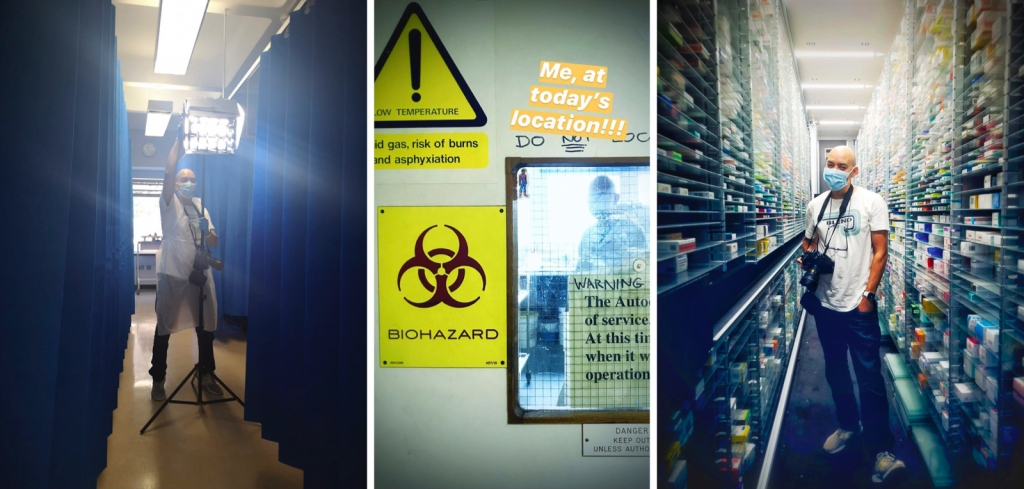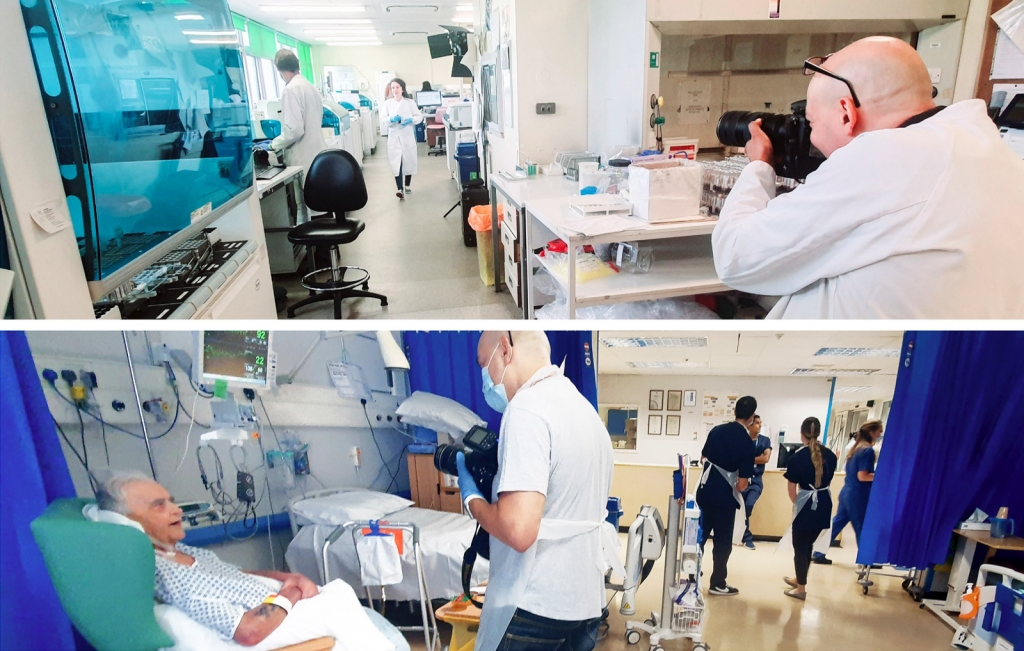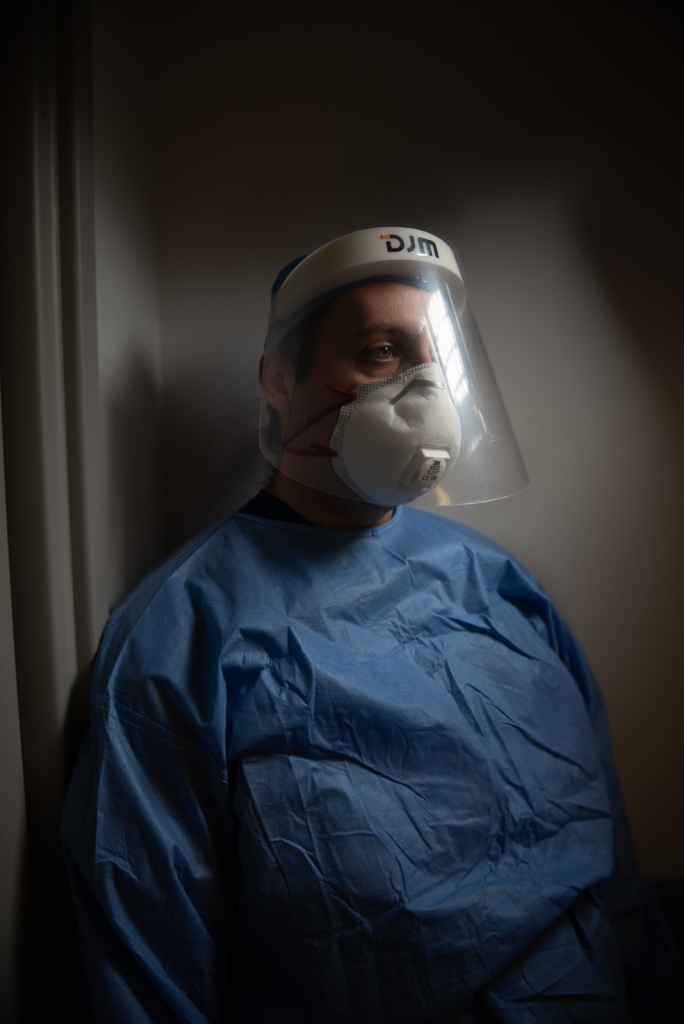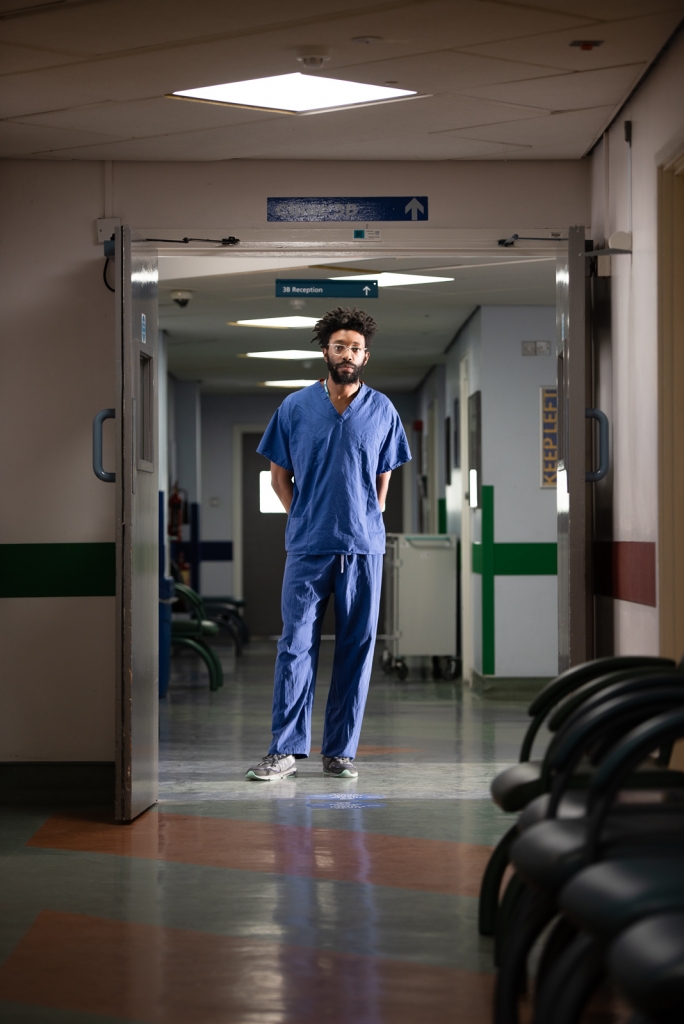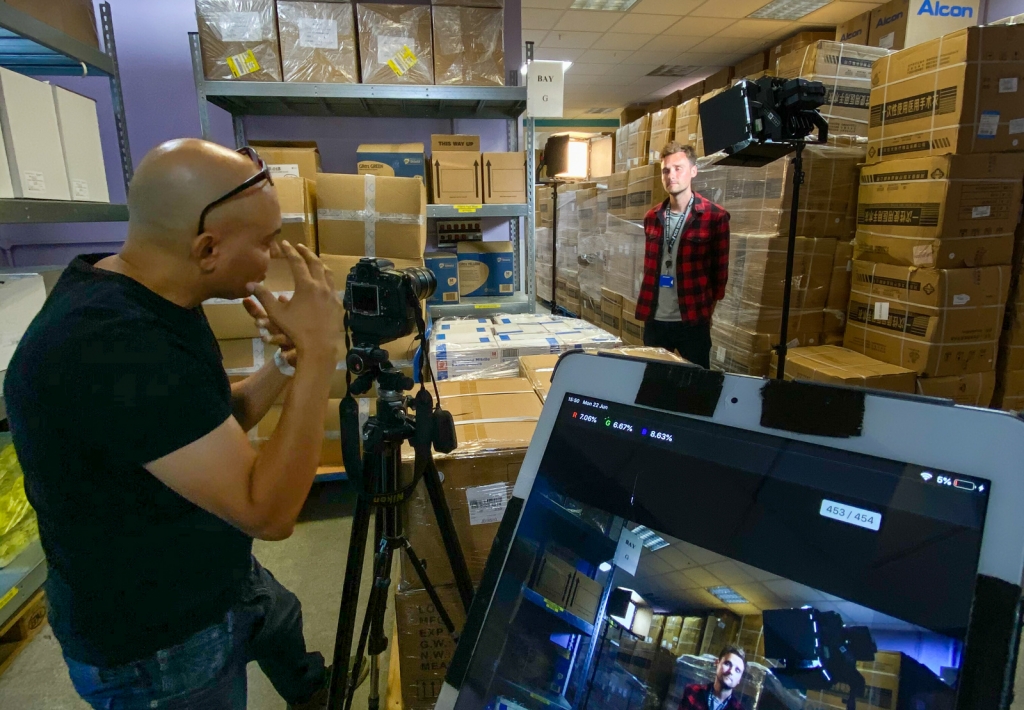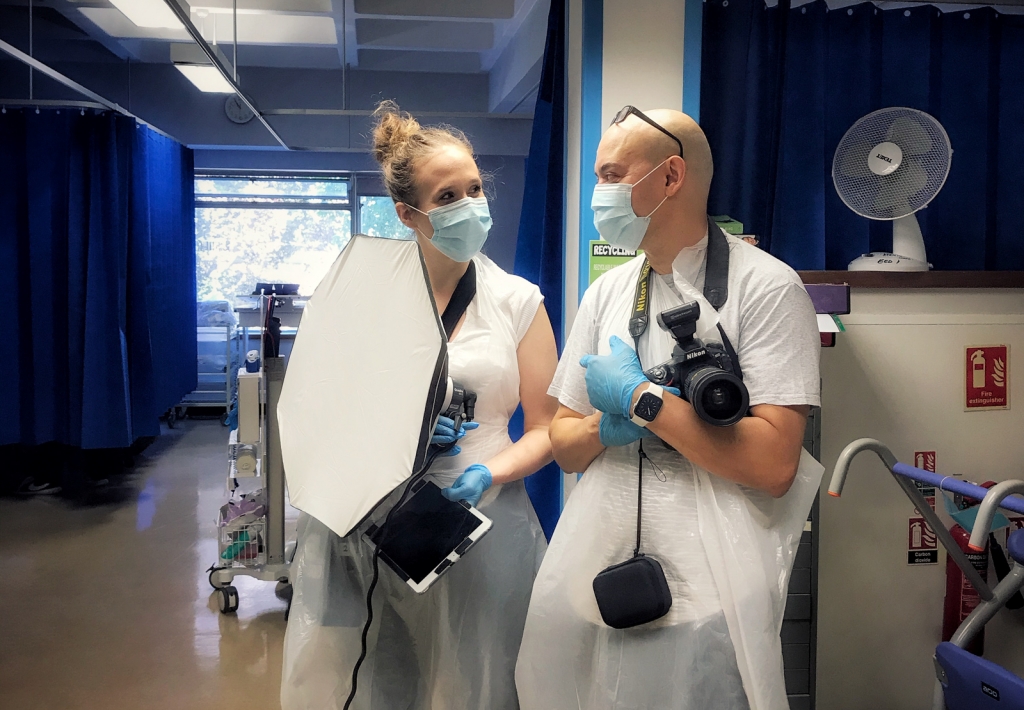Shooting Covid, at the Hospital
A Photographer’s View.
I’ve had some scary shoots before, the floor of a nuclear power station is pretty up there, as is the time I had to jump on the back of a motor cycle taxi to escape an angry crowd that had me surrounded, but this was different, and I remember walking in for the first time feeling rather scared. I was knowingly going into a Coronavirus hot spot, repeatedly and over many days, back when there were no tests to diagnose the virus, and no cast iron guarantees of how to avoid catching it.
My heart was in my mouth when for the first time I went into a ‘Red Room’ – one with a confirmed Coronavirus patient. I was there to photograph the medical staff as they treated him, and I was both excited and worried as I pulled on the PPE gown, mask, visor and gloves. It struck me as a bit stupid that I could hardly see through the viewfinder, but in a way that probably helped me concentrate on the photography rather than my worries as it seemed pointless to put me and my assistant in danger like that if I didn’t even get the shot.
Approaching People
The general atmosphere in the hospital was intimidating. People were rushing to and fro, always on the way somewhere, or gliding by pushing beds with silent occupants. And it’s not surprising that some people didn’t want to be photographed.
They’d been, and in fact were, going through so much. They’d tell me stories of incredible suffering and heart ache, such as the physiotherapist seconded into ITU who “could still hear all the beeping and the alarms in my ears when I got home, sitting in a dark quiet room,” or the nurse who told me “I still have nightmares at least three times a week and I know I’m not the only one in there.”
And so it became incredibly important that I approach the people, who nearly always didn’t know to expect me, with a great deal of tact and understanding. A portrait is a photograph of a person who has volunteered to share their being, for better or worse, with the photographer – they’ve made the decision that they’ll let someone in, and show them who the actually are.
That’s a big ask at any time, let alone when surrounded by “the most intense pain and grief and suffering.”
Making the Connection
How do you do it? How do you as a photographer, make a connection in such terrible circumstances? It’s easier to say what not to do. That’s because each person is a world unto themselves. The bridge that the photographer has to build between them and their subject has to relate to them, and not the photographer, and so you can’t come at it with a list or a recipe – otherwise you’re only taking a portrait of yourself.
So this is how it goes: I’m standing there in a corridor or a ward, lights and set up ready, and I’m feeling anxious about interrupting people as they scoot past. There’s a tug of war happening inside me, one part saying run away so I don’t leave myself open to their rejection, and the other half, the half that eventually wins, picks up when someone slightly slows down, or slightly orientates themselves in my direction. But why did they do that? Why are they open?
That’s the question I now resolve to answer. It’s time – time for me to step out and try to find a bridge of some description. It’s always the most nerve wracking moment, and it’s not something that I enjoy. I also never know what I’m going to say or do, which is doubly worrying! I’m often as much of a spectator as anyone else as to what’s going to come out of my mouth, but I’ve taken a decision that this is the way that it should be done, this is the way that it has to be, and so I follow my own lead – I genuinely want to know why.
Being Present
The present is a dangerous place which is why so many people avoid it all costs. But to take a portrait, you have to be present with the other person, and place yourself in the precarious position of not knowing what will happen next. These kind of portraits require that.
And it’s partly that unknowing, that makes me love this phase of the shoot so much. It’s like racing down a steep slope on a rickey go-cart, knowing that you may well wipe out, but you also might fly triumphantly onwards, reaching your unknown destination in glorious technicolour! And in the hospital, that feeling of being on the way to an unknown destination was heightened because I needed to have something much more meaningful than a regular conversation.
I had to ask them about situations and events that were incredibly painful – literally about the life and death of them, their patients and their families, and all that goes into that – and ask them to go back there and tell me about it. It kinda spooks me, thinking about it now, because of the enormity of what I was asking them to do. I remember it feeling like we were both high up, on a level above regular mundane moments. It was both enlivening and chastening to be so precipitously elevated without a net, only the two of us. It all felt so fast, and so precarious.
Having Two Brains
And that’s the difficult thing about photography: you’re doing two mutually exclusive things at the same time. On the one hand, you’re present and together with the other person; and on the other, you’re attending to the technical side of things which are constantly trying to strip you clean of the moment: is the exposure right, is the location appropriate, does the composition or lighting need changing, how would they react if I did … is the lens cap on?
When you get it wrong, the sense of loss is huge. I’m sure every photographer knows the feeling when one of the spinning plates comes down. Sometimes you’ll only realise it has hours or even days later. And here in the hospital I was continually worried that I was in the wrong place, or taking the wrong approach, or going after the wrong thing. The weight of all the people’s experiences sometimes felt so heavy – what if I just wasn’t up to the job of translating these people’s experiences? What if they were telling, for the first time, the most extreme events of their lives to a stranger, and all for nothing?


